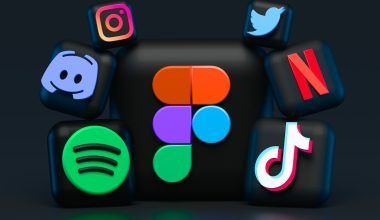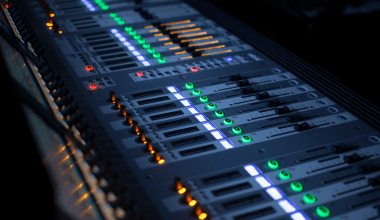Every time you listen to a song, a podcast, or even record your voice, you are working with something called an audio format. But what exactly does that mean? Simply put, an audio format is how sound is saved as a file. It decides how good the sound is, how big the file is, and where it can be played. Whether it’s your favorite music app or a professional recording studio, these formats make everything sound the way it does.
In this guide, we’ll explain audio formats in the simplest way possible. By the end, you’ll know which format is best for your needs, whether you’re listening to music, making content, or just curious. Let’s dive in!
What is an Audio Format?
An audio format is like a recipe for saving sound. It tells your computer, phone, or music player how to read and play the sound. Some formats make the sound smaller so it takes up less space. Others keep every detail so the sound is perfect but use more storage.
Why Do We Need Different Audio Formats?
Not all audio is used the same way. Sometimes we want to save space, like when downloading a song on our phone. Other times, we need the best sound quality, like when recording a song in a studio. Different formats give us these options.
For example:
- If you’re a casual music listener, MP3 might be good enough.
- If you’re a musician or an audiophile, you might prefer FLAC for better quality.
- If you’re streaming music, platforms like Spotify or Apple Music might use AAC.
Types of Audio Formats
There are two main types of audio formats:
- Lossy Audio Formats: Smaller files but some quality is lost.
- Lossless Audio Formats: Perfect quality but larger files.
Lossy Audio Formats
Lossy formats remove some parts of the sound to make the file smaller. The idea is to keep the sound good enough that most people won’t notice what’s missing. These are great for:
- Streaming music or podcasts.
- Saving songs on your phone without using too much storage.
Common Lossy Formats:
- MP3: The most popular format. Works everywhere but loses some quality.
- AAC (Advanced Audio Coding): Used by Apple and better than MP3 for the same file size.
- OGG (Ogg Vorbis): Open-source and used in games or by some streaming platforms.
Lossless Audio Formats
Lossless formats keep all the original sound. Nothing is removed, so the sound quality is excellent. The downside? The files are much bigger. These are best for:
- Musicians who want to keep their recordings perfect.
- Audiophiles who use high-end speakers or headphones.
Common Lossless Formats:
- FLAC (Free Lossless Audio Codec): High-quality and compressed to save some space.
- WAV (Waveform Audio File): Uncompressed and perfect for editing.
- ALAC (Apple Lossless Audio Codec): Apple’s version of FLAC.
Comparing Popular Audio Formats
| Format | Type | File Size | Sound Quality | Best For |
|---|---|---|---|---|
| MP3 | Lossy | Small | Good for most people | Streaming, casual listening |
| FLAC | Lossless | Medium | Excellent | Archiving, audiophiles |
| WAV | Lossless | Large | Studio-quality | Recording, editing |
| AAC | Lossy | Small | Better than MP3 | Streaming, Apple devices |
| OGG | Lossy | Small | Similar to MP3 | Gaming, open-source projects |
| ALAC | Lossless | Medium | Excellent | Apple ecosystem, audiophiles |
Why Audio Formats Matter
The choice of an audio format depends on how you’re using the sound:
- For Music Lovers: You might want small files (MP3) for storage or high quality (FLAC) for better sound.
- For Creators: You’ll need WAV for editing but might export as MP3 for sharing.
- For Streaming: Formats like AAC are widely used for quick downloads and good quality.
How Do Audio Formats Work?
Audio formats compress sound to save space or keep it as it is for high quality. Here’s a simple breakdown:
- Lossy compression cuts out parts of the sound that most ears won’t notice.
- Lossless compression keeps all the details but still tries to save some space.
Choosing the Best Audio Format for You
Here are some easy tips:
- Casual Listeners: Stick with MP3 or AAC. These formats are small and sound good enough.
- Musicians: Record in WAV for the best quality. Save final versions in FLAC for storage or MP3 for sharing.
- Audiophiles: Use FLAC or ALAC to hear every detail in your music.
- Gamers and Developers: OGG is great for interactive media like games.
How Audio Formats Affect Storage and Quality
Here’s a simple way to think about it:
- Smaller File = Lower Quality: Formats like MP3 save space by removing details.
- Larger File = Better Quality: Formats like WAV or FLAC keep every sound detail but use more space.
Audio Formats for Streaming Platforms
Most platforms use lossy formats to make streaming faster and easier. For example:
- Spotify: Uses OGG or AAC.
- Apple Music: Prefers AAC for its devices.
- YouTube Music: Often streams in AAC or MP3.
Fun Facts About Audio Formats
- The first MP3 player was invented in 1997!
- FLAC was developed to give audiophiles a better way to store their music.
- WAV files are often used in movies because of their high quality.
Tips for Converting Audio Formats
You can easily convert one format to another using software or online tools. However, remember:
- Lossy to Lossy: Quality may drop further.
- Lossless to Lossy: Saves space but loses quality.
- Lossy to Lossless: Won’t improve quality; it’s like trying to unbake a cake!
FAQs About Audio Formats
What is the most popular audio format?
MP3 is the most widely used format because it’s small and works everywhere.
Which format has the best quality?
FLAC and WAV are the best for quality because they keep all the sound details.
Can I play FLAC files on my phone?
Yes, but you may need a special app if your phone doesn’t support FLAC.
Future of Audio Formats
As technology evolves, audio formats are getting smarter. New formats are being developed to:
- Save even more space without losing quality.
- Work better with high-speed internet for streaming.
- Improve compatibility with new devices.
Conclusion
Audio formats are everywhere, from the songs you stream to the podcasts you enjoy. Whether you want small files or perfect sound, understanding these formats helps you make better choices. Remember:
- Use MP3 for everyday use.
- Try FLAC or WAV for the best sound.
- Choose AAC for streaming on Apple devices.
Related Articles:
For further reading, explore these related articles:
- What Does a Music Publisher Mean? Understanding the Role, Importance, and Benefits of Music Publishing
- What is a music publisher definition? Easy Guide for Beginners
- Independent Music Publishing Companies: A Simple Guide for Artists
For additional resources on music marketing and distribution, visit Deliver My Tune.






